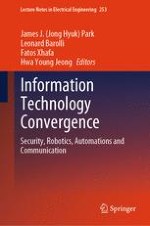Information technology and its convergence issue is emerging rapidly as an exciting new paradigm with user-centric environment to provide computing and communication services.
This area will be the most comprehensive topics with various aspects of advances in information technology and its convergence services.
This book covers all topics as computational science and applications, electronics engineering, manufacturing technology, services, technical skill to control the robot, automatic operation and application, simulation and testing communication and many more.
